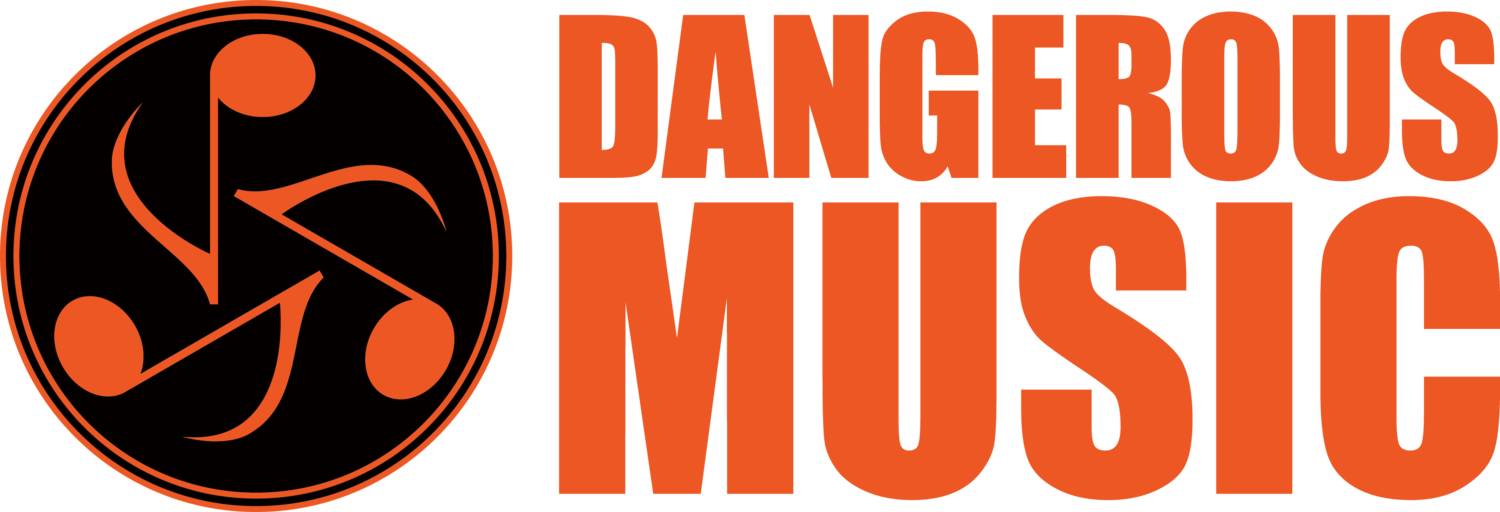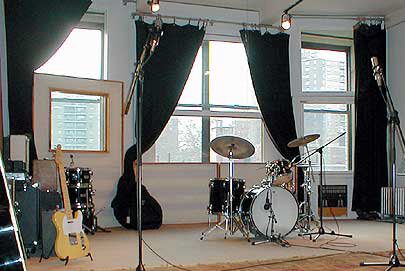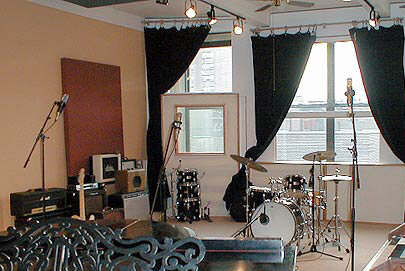OUR BACKSTORY & TRAJECTORY
Born from the taproot of Mastering, developing $250,000 custom designed transfer consoles and processing circuits for Absolute Audio, Masterdisk, Hit Factory and Sterling Sound, Dangerous Music introduced the recording and mixing world to a previously unexplored frontier of high fidelity.
Used across every single genre of music, on thousands of platinum, Grammy nominated and award winning tracks the clarity, tonality, articulation, silence and emotional impact have captivated the imagination of millions of listeners around the globe. Owned and operated by mercurial musicians whose nirvanic audio vision quest cannot be slaked by yesterday’s best, they are perpetually pushing beyond tomorrow’s.
At the core of every Dangerous design lurk Beautiful Circuits.
Neve gave us character, SSL provided workflow and Dangerous delivered audiophilia. Sonics previously only experienced within the closed chimerical chambers of the mastering laboratory opened up to the recording community. Thus today, you may hear everything, capture it gorgeously and craft it into your own, personal, signature patina; you at the helm as audio mixologist blending legacy colors with our modern innovative analog circuitry.
THE HYBRID STUDIO — A VISION
The company’s mission is to solve the problems of the ‘hybrid studio’ by leveraging the best of both worlds: seamless integration of analog and digital equipment’s strengths and eliminating their weaknesses. Since product designer Chris Muth’s time has been spent almost exclusively designing custom equipment for many of the world’s preeminent mastering engineers and facilities, the combination of a mastering quality audio path with an intuitive feature set became the company’s baseline. It is worth noting that these designs evolved not in a vacuum but with input from some of the best ears in the business, refined in a working mastering environment instead of on paper. In the end, listening makes all the difference.
Born out of the shop at Dangerous Music recording studios, the equipment company was officially founded in 2001 with the commercial release of the Dangerous 2-BUS analog summing amplifier. Dangerous Music product designs were created to answer the sonic and ergonomic challenges presented by the changing studio environment as it moved from analog consoles and analog multi-track tape recorders to hard-disk recording and software-based digital mixer/editors, collectively known as digital audio workstations, or DAWs.
The process of recording and mixing without an analog console or tape deck created the opportunity to develop products that allowed engineers to embrace all the power and convenience of a DAWs automation, editing and recall, while continuing to work as they had, with console-style tone and headroom, hardware monitor control, metering, speaker and input source switching, and the ability to insert analog processors into the signal path easily and with the highest quality results.
Company co-founder Bob Muller says, “The ideas behind Dangerous Music products are driven by the needs of the music community, who continuously finds new ways to work in the studio. Early on we concluded that once the smoke cleared it was not going to be an all-analog or all-digital studio, but a hybrid environment. We all embrace the benefits of new technologies, but the inevitable problems that arise need to be solved. As the analog console yielded to the DAW mixer as the focal point of the control room we recognized that certain equipment was now missing that is required to actually make a studio fully functional, sonically pleasing and ergonomically sensible. When you aren’t spending all your time clicking around computer menus, you can actually concentrate on the performance, the music, and the other creative elements of what recording and mixing is supposed to be.”
SOME HISTORY
Bob Muller, the company’s president, came to NY in 1985 as a drummer and producer to pursue freelance recording work, first assembling several “illegal basement 8-track studios” and eventually building and opening the recording studio named Dangerous Music in 1992. It was a traditional room, built around a vintage Neve console and Studer multi-track machine with a big live room, grand piano, Hammond, vintage amp collection… The studio built a reputation for excellent sound at a time when studios were abandoning their 2” tape and analog mixing consoles in favor of DAWs, and mixing in the box digitally. Pro Tools and Logic systems were added at Dangerous to accommodate clients who used these platforms. Living with and working through the issues presented by this new studio paradigm led to the creation of the Dangerous Music product line.
In the mid 1990’s Chris Muth came to the studio for a session as a producer / engineer and the two of them soon became friends and partners in the studio. Bob recalls, “The guitarist who booked the session said to me, ‘Now don’t be offended, but the dude who’s coming in to engineer is going to open up your electrical panel before he even looks at the gear in the control room.’ and I thought to myself, ‘I’m going to like this guy’.” They went on to pioneer the concept of the dedicated analog summing amplifier for DAW mixers by developing the Dangerous 2-BUS as a custom one-off product. The 2-BUS was built to order for local engineers in New York who had cut tracks at the studio but needed to mix in their own DAW off-site. The word started getting around and 2-BUS became so popular that Bob and Chris started “Dangerous Music Inc” the hardware company and began selling the 2-BUS commercially in 2001.
Co-founder and equipment designer at Dangerous Music, Chris Muth was on the scene in New York in the 1980’s when digital recording brought new challenges to the mastering process. In 1987 Muth built a mastering room at The Hit Factory to engineer Jack Skinner’s specifications. Skinner had come over from Sterling Sound. This began Muth’s mastering equipment saga.
In 1990 Muth went to work at Sterling Sound as the CD format began really taking over as the consumer medium. Working with famed Sterling mastering engineers Ted Jensen, George Marino and Greg Calbi, Muth modified existing mastering gear, which led to designing custom gear for the studio that met the new sonic challenges of dynamic range and hotter levels in the digital era and reproduction on digital consumer playback devices. With the ears and experience of the Sterling engineers, Muth was able to collaborate to create gear that sounded really fantastic and was up to the rigors of the hybrid analog/digital mastering environment.
After a stint at MasterDisc studios, in 1995 Muth began making mastering equipment under his own company name (Muth Audio Design) that grew out of all the custom and modified gear he had made for these studios. From 1998-2003 Muth returned to Sterling to become Technical Director and to oversee the design and construction of their new 14-room facility in Chelsea, integrating his custom designed mastering transfer consoles and monitor routers with each engineers’ chosen arsenal of outboard equipment; a project that took several years to complete. In 2003 he became Dangerous Music’s full-time electronic designer. Today, the Dangerous Music line of equipment springs from the sonic innovation during this time period, and fulfills the promise of revealing and preserving the highest audio quality.
As Dangerous Music’s product designer Muth was well established in product design and modification for mastering studios after many years at Sterling Sound. One of the tenets of Dangerous Music equipment is that it be transparent, like mastering engineers require. “We agreed early on that the place for coloration was on your front end when you’re tracking and inserting stuff when you are mixing,” says Muller. “We are of a mind that the summing or the monitoring paths should not be colored, because it limits the options of the engineer who’s working on the stuff. We wanted to take the “mastering style signal path” approach to everything we build, whether it’s the Dangerous MASTER or the Dangerous D-BOX, it’s all the same philosophy,” says Muller. “A musical yet uncolored sound, where it’s all very accurate and immediate and punchy and clear, with super wide bandwidth and no transient-suppressing components in the signal path.”
SIMPLE ON THE OUTSIDE, COMPLICATED ON THE INSIDE
Muller sums up what the company is trying to help achieve for their customers, “It’s about making great sounding gear that brings the recording process back to the immediacy of the creative moment of capturing a performance. The digital workstation brought so much more flexibility to the process, but it allowed mediocrity into the process too because you can fix everything afterwards. We just wanted to make the analog-digital hybrid studio work well, where you can use the best-of-both-worlds for recording, mixing and mastering. Take the things about analog that analog does best, and the things that digital does best, and make them work together in a way that does not interfere with the creative process.”
For example he says, “You’re not coming up against a wall of clipping all the time, or waiting for something to happen until you can hit record again, or having to jerk around so you can listen to something or A-B something. All these processes we know from being engineers. It’s all about workflow. We want to help define the hybrid studio workflow by building gear that makes it sound great, and be easy. ‘Simple on the outside, complicated on the inside.’ ‘One button, one function’ is very appealing to us. We’re about that old school ergonomic, with a knowledge and attitude towards what the digital studio is,” concludes Muller.
DANGEROUS MUSIC PRODUCT RELEASE TIMELINE
2001 Dangerous 2-BUS — commercial release (previously custom made, replaced by 2-BUS+)
2002 Dangerous MONITOR (discontinued)
2002 Dangerous 2-BUS LT (discontinued)
2003 MQ (discontinued)
2003 MIXER (discontinued)
2004 Dangerous S&M (discontinued- features available in MASTER)
2004 Dangerous MASTER– commercial release (previously custom made)
2005 Dangerous MONITOR ST stereo monitor control
2005 Dangerous MONITOR SR surround monitor control
2006 Dangerous D-BOX (discontinued)
2007 Dangerous DAC-ST (discontinued)
(Additional Switching System expansion units for Dangerous Monitor ST-SR)
2008 Dangerous DAC-SR (discontinued)
(Additional Switching System expansion units for Dangerous Monitor ST-SR)
2009 Dangerous Uniswitch (discontinued)
(Additional Switching System expansion units for Dangerous Monitor ST-SR)
2010 Dangerous BAX EQ
2011 Dangerous LIAISON
2012 Dangerous SOURCE
2013 Dangerous COMPRESSOR
2015 Dangerous CONVERT-2
2015 Dangerous CONVERT-8
2015 Dangerous 2-BUS+
2017 Dangerous CONVERT-AD+
2019 Dangerous D-BOX+
2020 Dangerous CUTTER
2022 Dangerous 2-BUS-XT












